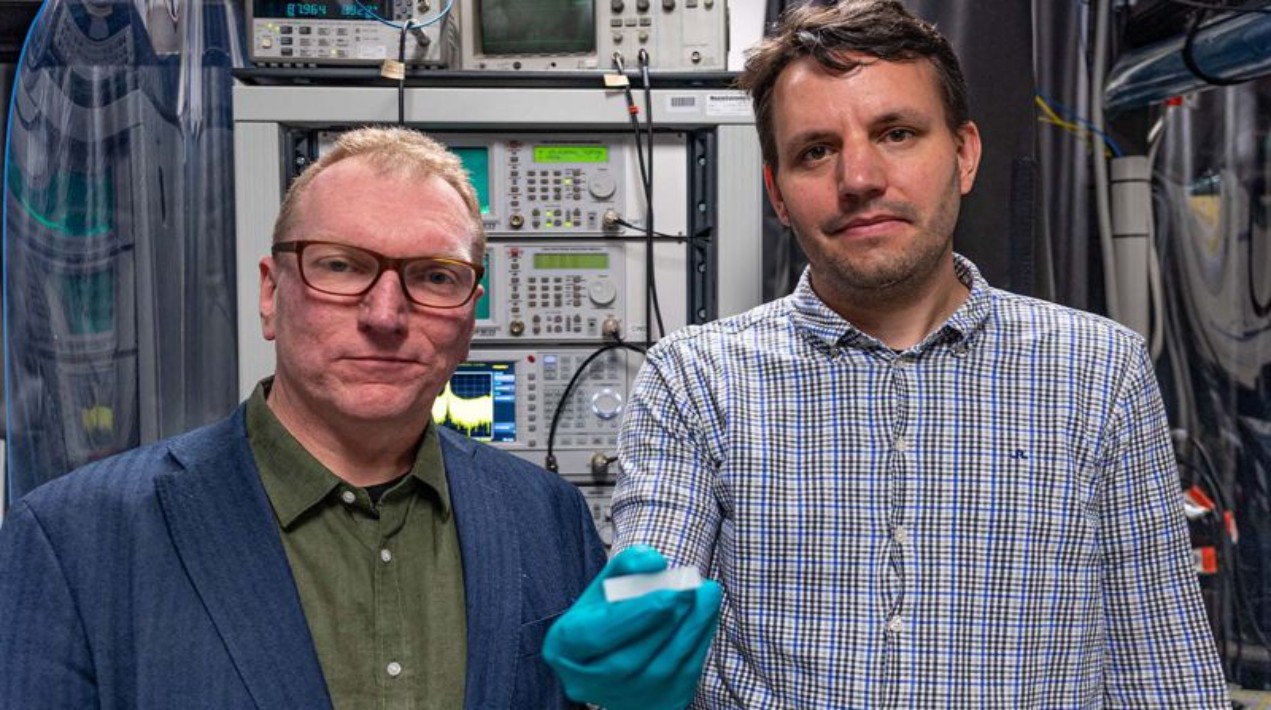
Leading scientists and experts in light-based technologies argue that super-thin lithium niobate chips are likely to replace silicon chips in the field of advanced manufacturing. They have a wide range of potential applications, including detecting the ripeness of fruit from a distance on Earth and guiding navigation on the Moon.
According to these scientists, the use of lithium niobate as an artificial crystal offers a superior platform for light-based technologies, due to its exceptional performance as well as recent advancements in manufacturing techniques which make it more accessible.
A team of international experts, led by Distinguished Professor Arnan Mitchell from RMIT University and Dr Andy Boes from the University of Adelaide, conducted a review of the capabilities and potential applications of lithium niobate in the journal Science.
The team, which includes scientists from institutions such as Peking University in China and Harvard University in the United States, is collaborating with industry partners to develop navigation systems that will aid rovers in driving on the Moon in the upcoming decade.
As GPS technology cannot be used on the Moon, the team’s innovation is focused on developing an alternative navigation system for lunar rovers. As it is not possible to use GPS technology on the Moon, the team’s innovation is intended to fill this gap.
According to Mitchell, the lithium-niobate chip can measure movement by detecting small variations in laser light, without the need for external signals. The artificial crystal is being used to develop various innovative applications, and competition to take advantage of its potential is increasing, Mitchel, who is also the Director of the Integrated Photonics and Applications Centre, said.
The lunar navigation device was in the early stages of development, the lithium niobate chip technology was “mature enough to be used in space applications”. The team’s lithium niobate chip technology is also flexible enough to be rapidly adapted to almost any application that uses light. They are now focusing on navigation. However, the same technology could also be used for linking the internet on the Moon to the internet on Earth.
The team is working with an Australian company that provides navigation services to create optical gyroscopes, where laser light is launched in both clockwise and anticlockwise directions in a coil of fibre. According to Albert Einstein’s theory of relativity, as the coil is moved, the fibre becomes slightly shorter in one direction than the other.
The team’s photonic chips are sensitive enough to detect this small difference and use it to determine the movement of the coil. By keeping track of movements, it’s possible to know the location relative to the starting point, this is known as inertial navigation.
This technology can be used to detect the ripeness of fruit by using a drone to measure the absorption of light in the mid-infrared part of the spectrum by gases emitted from ripe fruit. The data collected by the drone can be used to determine when the fruit is ready for harvesting.
The team’s microchip technology is much smaller, cheaper and more accurate than current technology and can be used with very small drones that won’t damage fruit trees.
Looking ahead
Australia has the potential to become a leading producer of integrated photonic chips made from lithium niobate, a material that has a wide range of applications in technology that utilise the entire spectrum of light. This would have a significant impact on multiple industries and could position Australia as a global hub for the manufacturing of these types of chips.
The team has developed the capability to manufacture these integrated photonic chips from lithium niobate in Australia, and there are multiple industries that can benefit from this technology. These photonic chips have the potential to revolutionise industries beyond just optical fibre communications, by providing advanced capabilities in areas such as sensing, imaging, and quantum computing, among others.
















